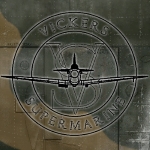Got a question for the FM folks. I'm trying to do two representations of the Spitfire I, one fueled with 87 octane and one with 100 octane fuel. From stats I found, the engine could be boosted for an additional 6 psi manifold pressure on 87 octane and 12 on 100 octane. I've looked at the engine section in the aircraft.cfg and don't really understand the relationship between all the MP and emergency boost values. Any help would be appreciated. Thanks.
Daniel

 CFS3
CFS3





 :
:





Bookmarks